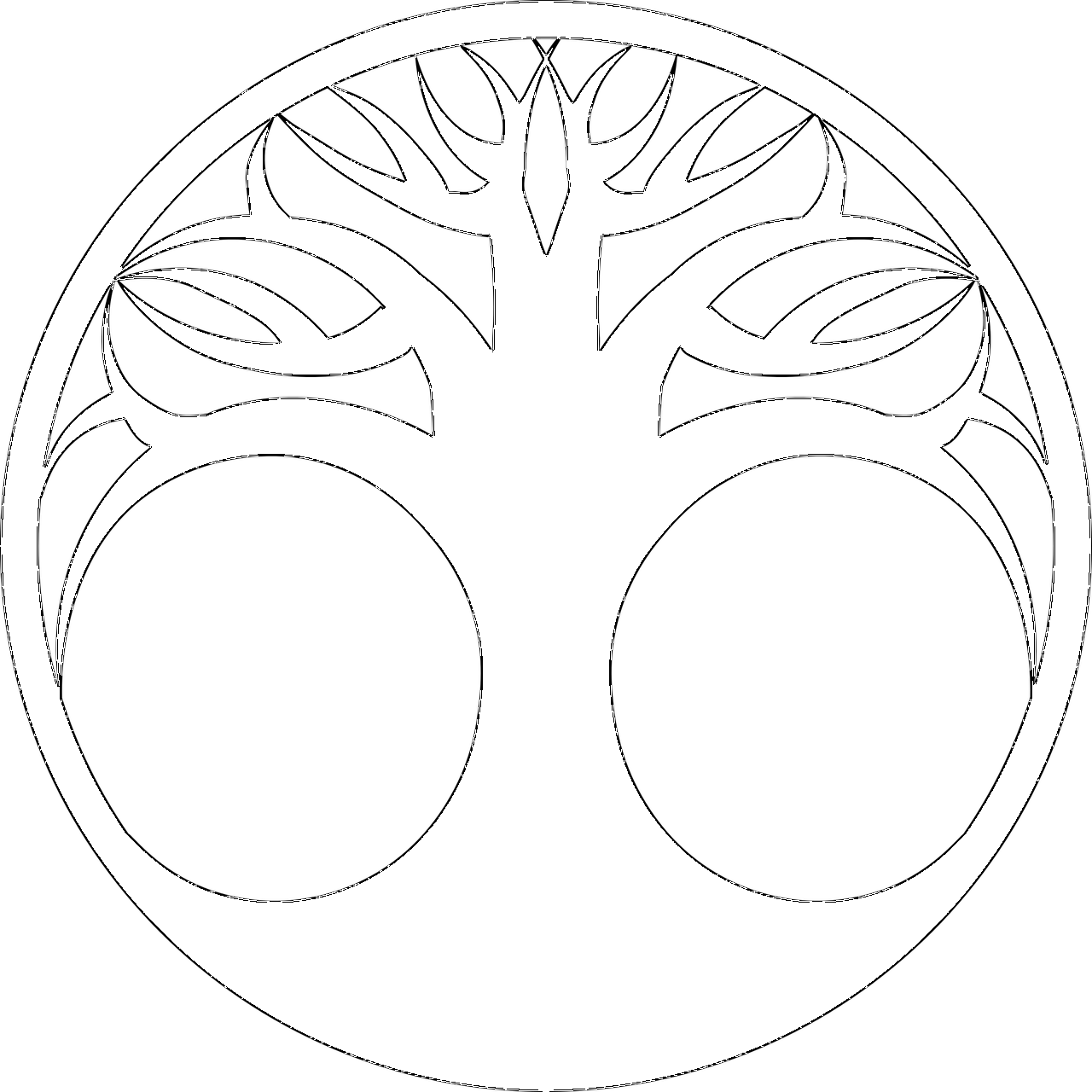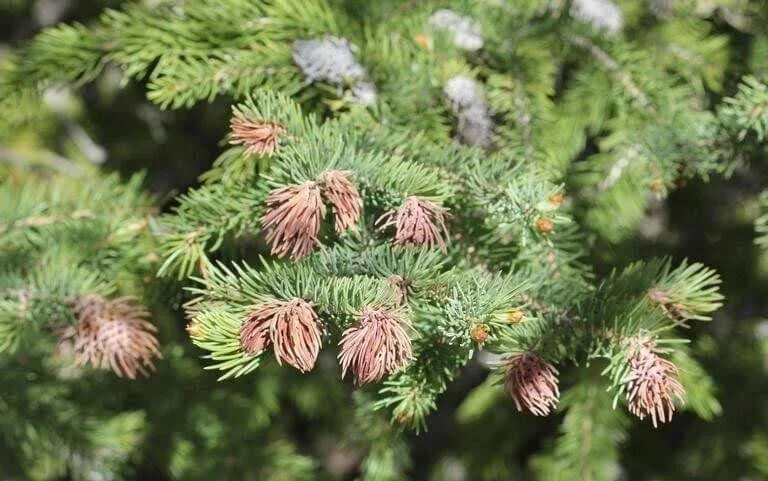Why Is My Spruce or Pine Tree Turning Brown?
Drought Stress, Needle Drop, and Common Evergreen Issues in Cochrane
Have you noticed your spruce or pine tree looking more bare than usual? Needles turning brown and dropping — sometimes in late summer or even fall?
You’re not alone. In recent years, we’ve seen a growing number of evergreens struggling in Cochrane and NW Calgary, with homeowners asking:
“Is my spruce tree dying?”
“Why are the needles turning orange or brown?”
“Is this just drought… or something worse?”
In many cases, the answer is: both. Drought stress is weakening our conifers, and that opens the door to fungal diseases, insects, and premature needle drop — all of which are signals that your tree needs help.
A Closer Look: Why Are Your Spruce or Pine Trees Declining?
Let’s break it down.
1. Drought Stress & Environmental Pressure
Even though spruce and pine trees are adapted to Alberta’s climate, they’re not immune to stress — especially in urban and suburban landscapes, where soil is often compacted, roots are shallow, and irrigation is inconsistent.
In recent hot, dry summers, we’ve seen:
Brown or orange needle tips in late summer
Early fall needle drop, especially in older needles
Sparse, thinning canopies, even in otherwise mature trees
Drought stress weakens your tree’s immune system — making it more vulnerable to disease and insects.
2. Fungal Diseases in Evergreens
Some trees struggling with drought also show signs of fungal infection. The most common fungal issues in our area include:
Rhizosphaera Needle Cast (Spruce)
Starts on lower branches and moves upward
Older needles turn purple-brown, then fall off
Canopy slowly thins from the bottom up
Lirula Needle Blight
Often confused with normal fall needle drop
Causes yellow or orange banding on needles
Affects white spruce, black spruce, and sometimes pine
Sirococcus Tip Blight
Affects new growth and shoot tips
Causes dieback at the ends of branches, with browning needles and stunted twigs
Often impacts younger spruce trees in residential plantings
3. Insects Commonly Seen on Spruce and Pine
While insect damage isn’t usually fatal on its own, it adds to the stress:
Spruce Spider Mites
Tiny, dusty-looking mites that feed on needles
Cause stippling, yellowing, and eventual browning of foliage
Most active in hot, dry weather
Yellow-headed Spruce Sawfly
Larvae feed on new needles, especially in young spruce
Creates a bare, chewed look on branch tips
More common in dense plantings or wind-exposed trees
Pine Needle Scale
White, crusty “bumps” on pine needles
Affects tree vigor by reducing photosynthesis
Can combine with drought stress for rapid decline
Why It’s Really Happening: The Root Cause
All of these problems — from early needle drop to fungal infections to mites and sawflies — have a common thread: They attack stressed trees.
Trees under pressure from:
Soil compaction or poor drainage
Low microbial diversity in the soil
Synthetic fertilizer use
Drought stress and shallow roots
As research by Dr. Thomas Dykstra shows, insects and pathogens are nature’s cleanup crew — they don’t target healthy trees. Instead, they zero in on those with internal imbalances or weak defenses.
Why Sprays and Synthetic Fertilizers Fail
If you’re seeing these symptoms, it might be tempting to grab a spray or fertilizer — but they won’t fix the underlying problem.
Fungicides and insecticides may suppress visible symptoms but don’t fix the internal weakness that attracted them in the first place
Synthetic fertilizers can cause weak, fast growth that’s even more prone to disease
Both approaches damage the soil food web, leaving your tree dependent on short-term fixes instead of building resilience
What You Can Do Instead
We take a regenerative approach — focusing on real recovery from the root up.
Organic Bioactive Tree Treatments
Our foliar sprays and deep root inoculations are packed with living microbes, bioavailable nutrients, and humic substances that improve soil structure, boost nutrient cycling, and restore natural defenses. Healthier trees mean fewer pests and diseases — without the use of harsh chemicals.
Tree Health Consultations
We evaluate the visible symptoms and underground conditions — soil compaction, planting depth, water access, root health — and create a customized plan to support recovery.
Strategic Pruning
Dead or infected limbs can be pruned to prevent spread, improve air circulation, and reduce the energy load on already stressed trees.
A Regenerative Path for Your Evergreens
If your spruce or pine is showing signs of needle drop, discoloration, or dieback — don’t just assume it’s “natural” or “just the heat.”
These trees are signaling that something deeper is off. The good news? We can fix it — and we don’t need to spray our way there.
Our regenerative treatments are safe, effective, and focused on long-term vitality. No quick fixes. No chemicals. Just better biology.
Take the Next Step
Concerned about your spruce or pine? We’re here to help.
👉 Book a Tree Health Consultation – 30–60 minutes on-site with Kurt to inspect your evergreens and soil.
👉 Explore Our Organic Tree Treatment Program – Four visits per year, starting at $399 for small properties. Includes foliar sprays and/or deep root injections.
👉 Request a Quote or Upload Photos – Let us know what you’re seeing, and we’ll recommend the right next step.
About Kurt & Cochrane Tree Care
Kurt Stenberg is a regenerative arborist, permaculture practitioner, and certified arboriculture instructor with Arboriculture Canada. He also hosts the Arborist Blueprint Podcast, helping arborists across the world shift toward tree health-first practices.
At Cochrane Tree Care, we specialize in tree consultations, organic treatments, and sustainable solutions for long-term tree vitality.




